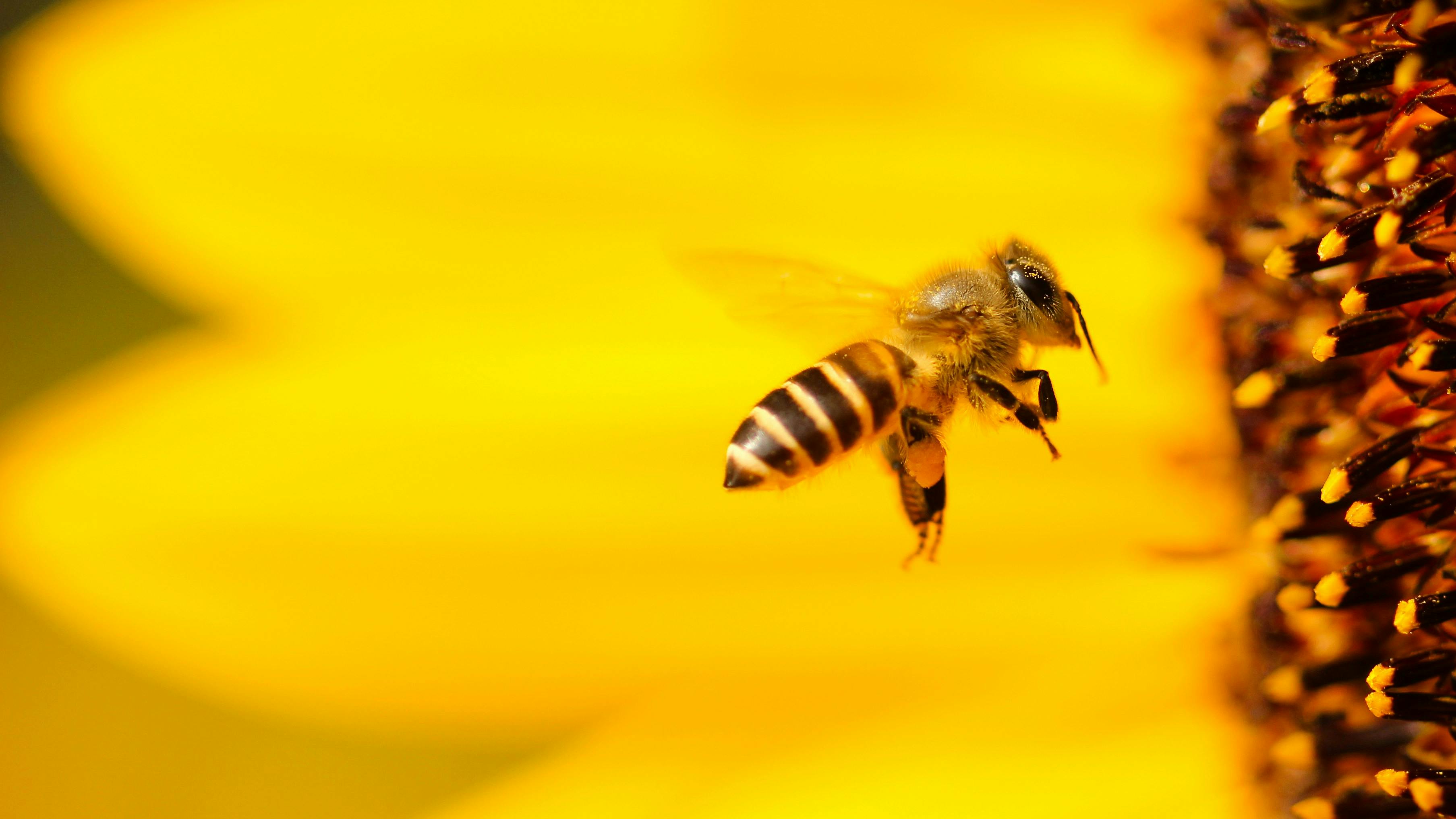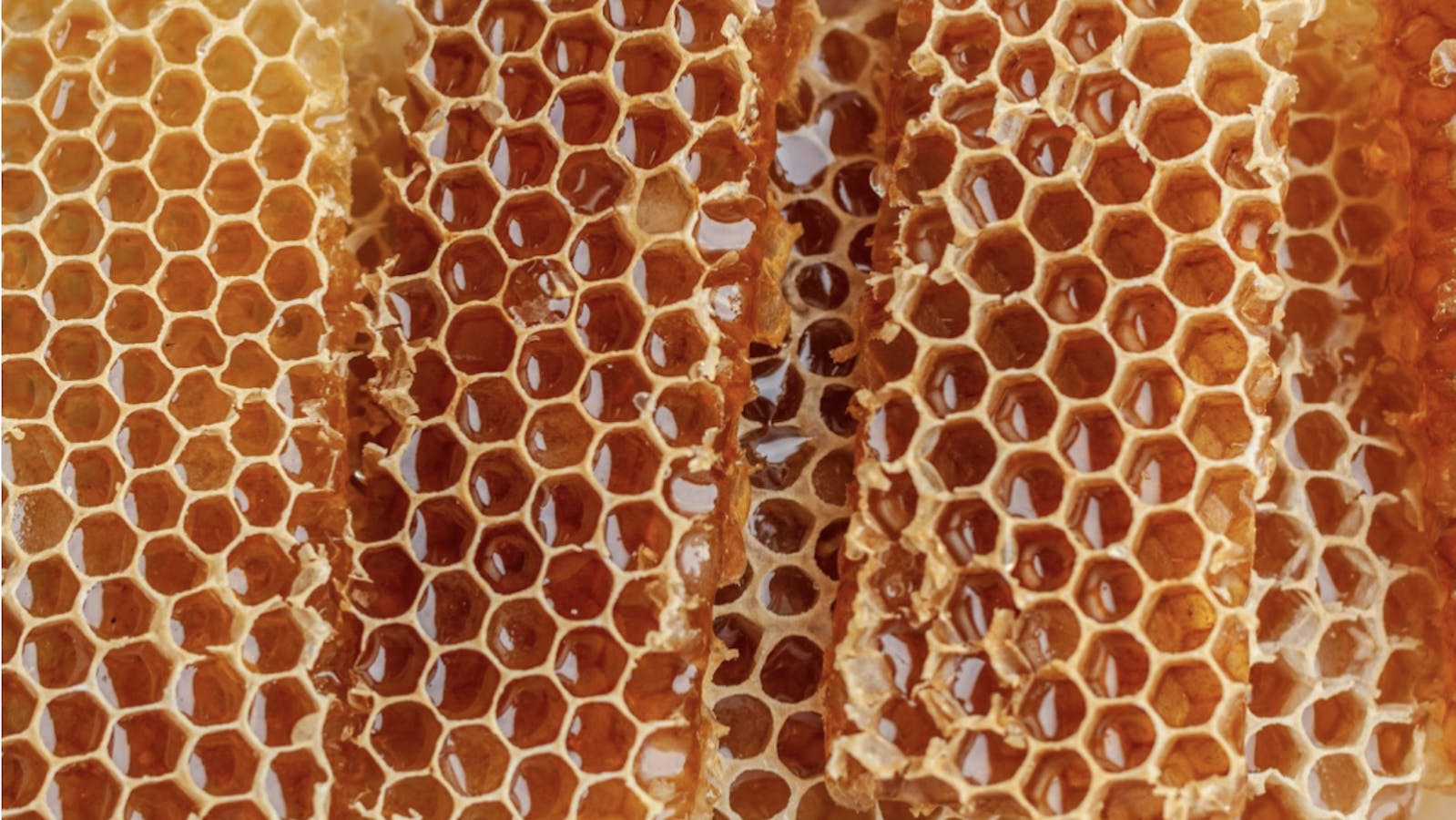

May 20th is World Bee Day, established by the United Nations to raise awareness about their importance for human life and the environment. Their existence is at risk in this historical period due to various factors, such as habitat destruction, pollution, climate change, and the use of pesticides.

Bees and pollination: pillars of biodiversity preservation
Bees are essential insects for the ecosystem, but there are different species that stand out for their behaviour and role.
Among the best known are honey bees (Apis mellifera), which are the main producers of honey and have significant economic importance, both due to honey production and their use in agriculture for pollination.
In general, bees and all pollinators are crucial for safeguarding biodiversity. The reproduction of many plants depends on pollinators transferring pollen from one flower to another. Bees land on flowers to feed, and during this process, some of the pollen sticks to their bodies. When they move to another flower, the collected pollen is transferred, thus aiding fertilization and the production of seeds and fruits.
Moreover, bees are clear indicators of the health and well-being of the ecosystem: their presence or absence can provide information about environmental quality, as these insects are particularly sensitive to climate change, pollution, and diseases.

There is a famous quote, mistakenly attributed to the great Albert Einstein, which says: “If the bee disappeared from the face of the Earth, man would have only four years left to live.”
In reality, this statement first appeared in a leaflet distributed in 1994 in Brussels by the National Union of Beekeepers. The purpose of that leaflet was to raise awareness among authorities about the growing crisis threatening beekeeping globally.
The dramatic tone of the message aimed to highlight the devastating consequences that the disappearance of bees would have on the entire ecosystem and humanity itself. In short, bees give us much more than honey: they offer us biodiversity, balance, and life, and protecting them is not an option, but rather a commitment we should make for the future.

Honey: How It’s Made and Its Health Benefits
Honey is a sweet and natural substance produced by bees (Apis mellifera). These tireless insects, flying from flower to flower, collect nectar, a sugary substance produced by plants to attract pollinators. Once collected, the bee stores it in a small pouch in its body, known as the nectar stomach. The nectar is then transported to the hive, where it is gradually transformed into a more complex substance. Only after this process do the bees deposit it into the wax cells, where it completes its maturation. The result of this extraordinary process is honey: a concentrate of health and sweetness.
There are numerous varieties of honey, depending on the type of flower from which the bees collect the nectar. Among the most common varieties are acacia honey and wildflower honey.
Honey can be chosen as a natural alternative to sugar, perfect for sweetening hot drinks or enhancing dishes like cheeses, thanks to its rich and enveloping flavor. This practice has deep roots: in ancient times, long before sugar became widespread, honey was the sweetener par excellence. Using it today is a way of renewing a millennial bond with one of the most precious gifts from bees.
What many people don’t know is that honey also has numerous health benefits: it possesses natural antibacterial properties— which is why it is sometimes used as a natural remedy for coughs and sore throats (the so-called "grandmother’s remedy")—and is a powerful source of energy.
In summary, honey offers many benefits to our body, and for this reason, we should be grateful to the bees!

Honey-Based Recipe: Sussa di Miele
Together with Cesarina Francesca from Palermo, let’s celebrate the importance of our little winged friends by sharing a special recipe: Sussa di Miele.
"In Bagheria, my hometown, during the Day of the Dead celebrations, there is an ancient tradition deeply rooted in popular beliefs. On the night between November 1st and 2nd, it is said that the souls of the deceased return to visit their families, bringing gifts, especially for children. Among the gifts are traditionally toys and typical sweets of the festival, including the Sussa di Miele".
The Sussa di Miele is a typical Sicilian sweet, similar to a large-sized biscuit, which, once baked, is dusted with cileppo syrup and colorful sugar sprinkles.
Cileppo is a syrup made with water and sugar, and it is usually brushed onto the surface of the sweet after baking, giving it a glossy appearance and an extra touch of sweetness.


Sussa di miele
A large Sicilian cookie, decorated with cileppo (syrup) and colorful sprinkles, typical of the pastry tradition of Bagheria
Ingredients
- 500 g all-purpose flour
- 500 g toasted almonds with skin
- 400 g sugar
- 100 g honey
- 3 eggs
- 1 teaspoon of ammonia dissolved in the juice of half a lemon
- Cinnamon
- Ground cloves to taste
For the cileppo (syrup):- 125 g sugar
- 30 g water
Method
- Using a knife, roughly chop the almonds.
- Add them to the rest of the ingredients and knead the dough.
- Form cylinders about 3 cm in diameter and 30-35 cm long.
- Place three cylinders close together on a baking sheet lined with parchment paper; they will merge during baking.
- Bake at 180°C for about 20 minutes or until they are slightly browned.
- After baking, brush with the cooked water and sugar syrup, called "cileppo."
- Dust with colored sugar and anise seeds.